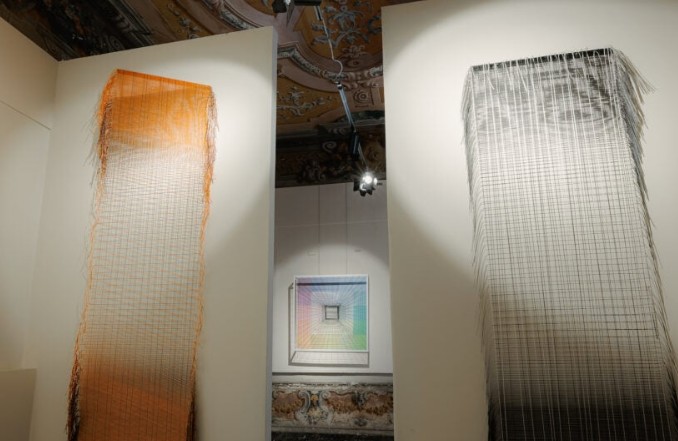Soft Architecture: When Fabric Becomes Space
In Castelfidardo, Italy, i-Mesh transforms technical textiles into living art, weaving contemporary tapestries that blur the line between architecture and imagination. From the Adriatic coast to Osaka’s Expo 2025, these works by Kengo Kuma, Tomo Ara, Yuko Nagayama, and Migliore+Servetto turn fabric into a medium of meaning, light, and spatial poetry.
TECH RESERCH AND INNOVATION
Charlotte Madeleine CASTELLI
10/26/20252 min read


In the heart of the Marche region, in Castelfidardo, a quiet revolution unfolds. i-Mesh, a brand born from the dialogue between nautical engineering and architectural imagination, transforms the rigid lines of built space into surfaces that breathe, sway, and respond. Here, fabric is not mere material; it is a vessel of meaning, a mediator between the tangible and the ephemeral, a bridge where artistry and innovation intertwine.
The journey began with sails. Founder Alberto Fiorenzi, trained in naval architecture and yacht design, witnessed firsthand the subtle power of materials when applied beyond their expected realm. The worn sails of the Prada building, repurposed by Renzo Piano, revealed a latent poetry in technical precision—an aesthetic born of necessity yet open to interpretation. From that moment, the vision of “soft architecture” emerged: a space where texture, light, and structure converse fluidly, and where materials become storytellers.
The threads of i-Mesh are the embodiment of this vision. Rooted in advanced composites such as basalt, silicon, carbon, and zylon, each fiber carries the memory of the sea, the sky, and the infinite search for balance. Panels are crafted with parametric precision, produced on demand, and conceived to honor both form and sustainability. Waste is reduced to nothing; impact is minimized. What remains is poetry in motion: a material at once technical and lyrical, capable of redefining the very notion of spatial experience.
The Contemporary Tapestries project, conceived by Fiorenzi and Cristiano Toraldo di Francia, elevates this dialogue to the realm of narrative. Artists and architects are invited to explore the potential of fabric: its transparency, its fluidity, its capacity to inhabit space and transform perception. In Osaka, these visions materialize with sublime subtlety. Migliore+Servetto’s work unfolds as an immersive environment, where black and golden threads weave a rhythm that is at once disciplined and alive. Kengo Kuma draws from the delicate geometry of Kumiko, layering motifs that dissolve from density into airy openness, each layer a silent blessing upon the space it inhabits. Tomo Ara honors Toraldo di Francia through a fluid, three-dimensional grid, a composition that flows across planes like a thought in motion. Yuko Nagayama evokes the ephemeral nature of waves, creating a tapestry that responds to the presence of visitors, translating movement into form, emptiness into resonance.
In the hands of i-Mesh, material becomes more than support; it becomes dialogue, memory, and gesture. The project redefines the notion of tapestry, softening architecture without diminishing its presence, transforming rigid surfaces into living spaces that invite reflection, interaction, and wonder. In this union of art, craft, and science, the fabric is not only woven—it is orchestrated, a subtle symphony of light, space, and imagination that lingers long after the viewer has passed.
© Charlotte Madeleine Castelli | All rights reserved
